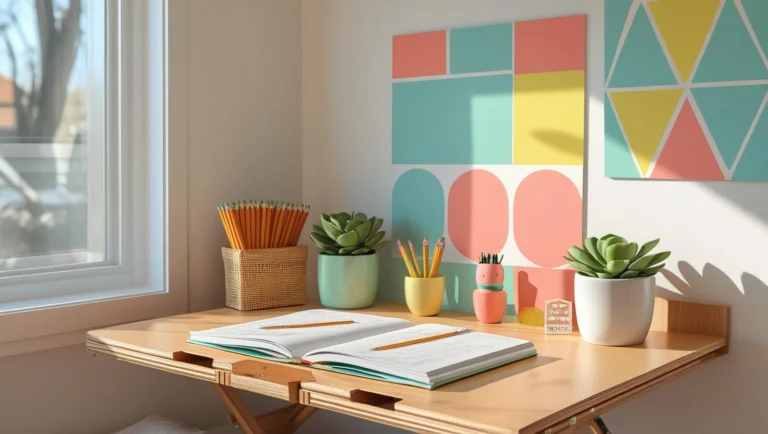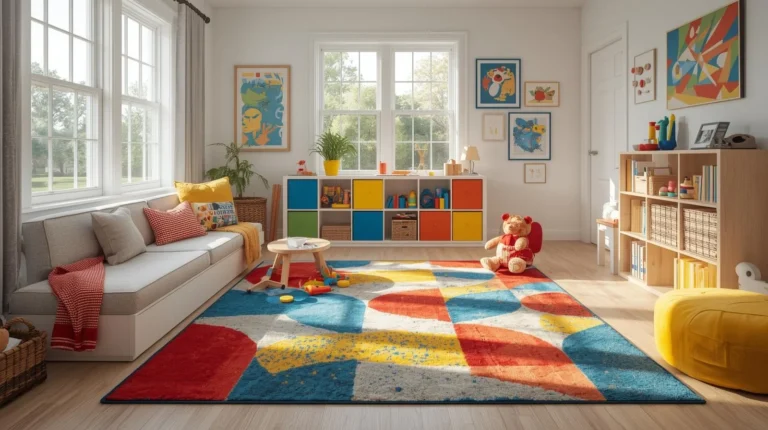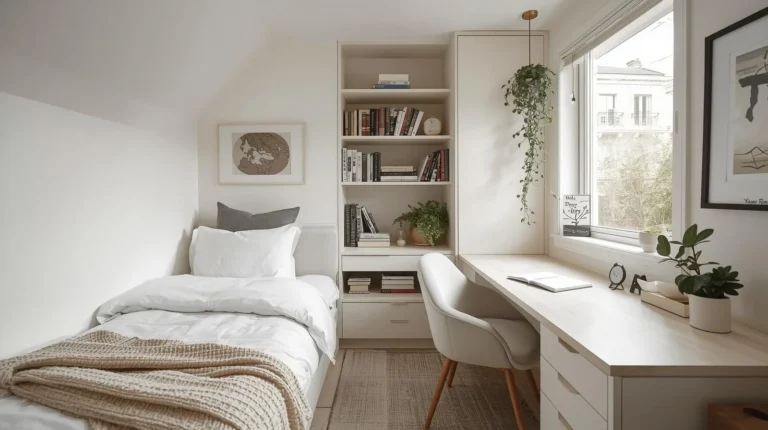How to Style and Enhance a Gray Brick Fireplace

I’ve lived in homes with fireplaces for over two decades. I’ve seen styles come and go. I’ve touched every brick many times. I teach folks how to make these cozy hearths shine. Now I’ll tell you how to style and enhance a gray brick fireplace so you will love it and feel proud every time you gather near the fire.
Section 1: Understanding Your Gray Brick Fireplace and Its Character
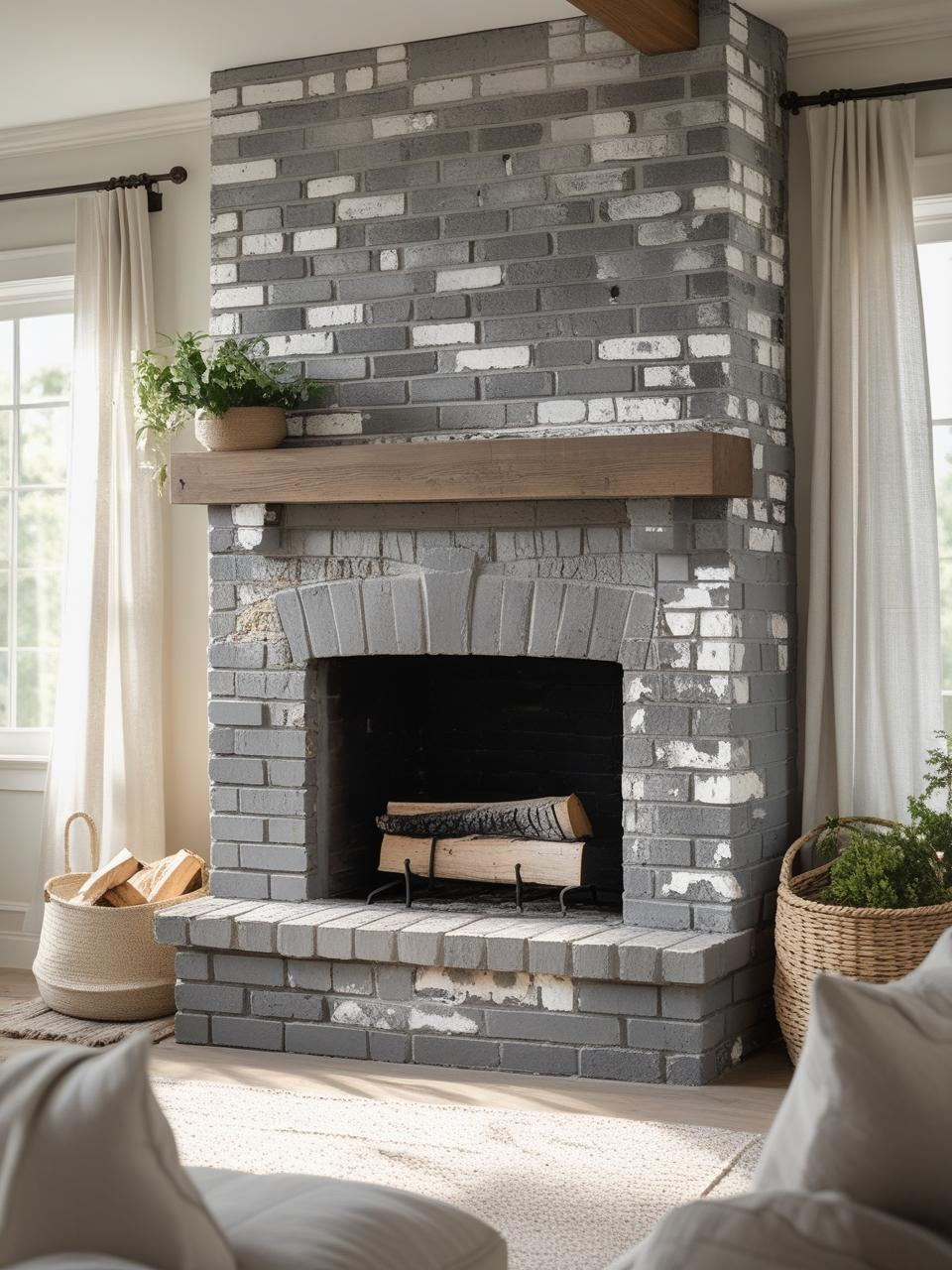
When I look at a gray brick fireplace, I see texture. I see layers of cool tones that feel like quiet rain on a stone path. Gray bricks have small cracks, slight roughness, and a steady color. This steady color lets other things around it sparkle. When you style your fireplace, you are helping those things show up. The bricks are not flat. They have souls. Think of them like a soft gray canvas. You want to bring warmth without hiding the bricks.
You want to know how the bricks came to be gray. Sometimes it was paint. Sometimes it was a thin layer of whitewashed color. Sometimes people used gray mortar. The way the gray shows itself gives you clues. If it is paint, the paint may peel over time. You can bring out more texture or tone it down. If it was colored mortar, the bricks may change color if you sand them or brush them lightly. Understanding the history means you know how to add things that won’t wear away too fast. You learn what the bricks will keep and what they will resist. That helps you plan better.
Section 2: Warming Gray Brick with Real Texture and Soft Materials
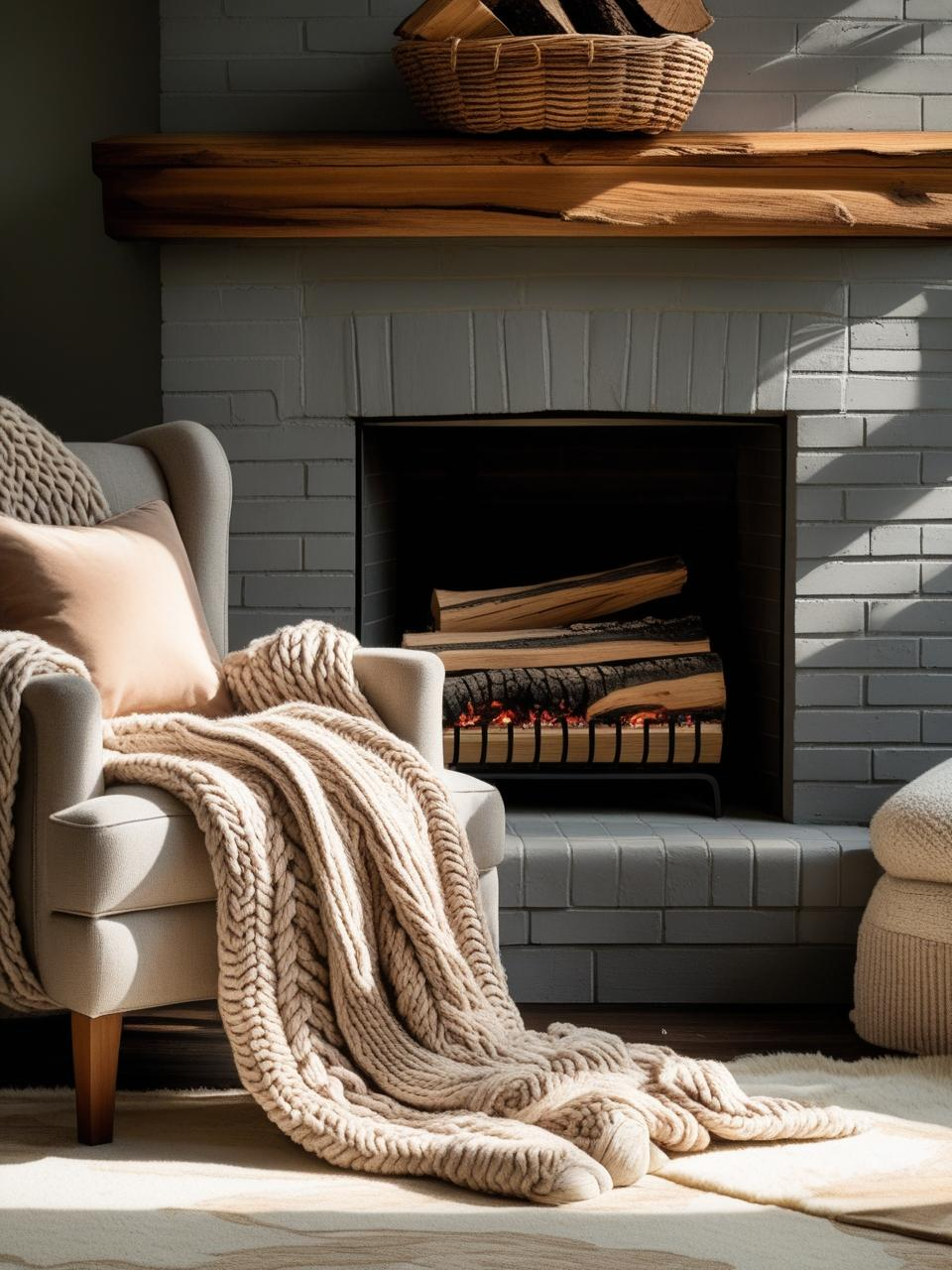
Gray feels cool. But we do not want a cold room. We want a warm room. To warm gray brick, you bring in soft layers. You choose rugs, throw pillows, blankets, maybe a wooden mantel, or a big basket of logs. Soft cloths absorb light in a way that bricks cannot. When your eyes reach the fireplace, they land first on the soft cloth or warm wood. The soft cloth says, “Come sit.” A wooden mantel says, “Stay awhile.” The trick is to pick materials that speak to the gray.
Not little pops of bright colors that scream. Instead, warm beige, pale gold, softly aged leather, or a muted taupe. These choices help your gray brick glow rather than feel icy.
You don’t want harsh patterns that fight with the brick lines. You want cloth that drapes and folds. Let it catch the light gently. Let it show texture close up. Then step back. The fireplace says, “I am peaceful. I am here.” Your space feels calm, like just after the first hot sip of cocoa.
Section 3: Choosing a Mantel That Honors the Fireplace
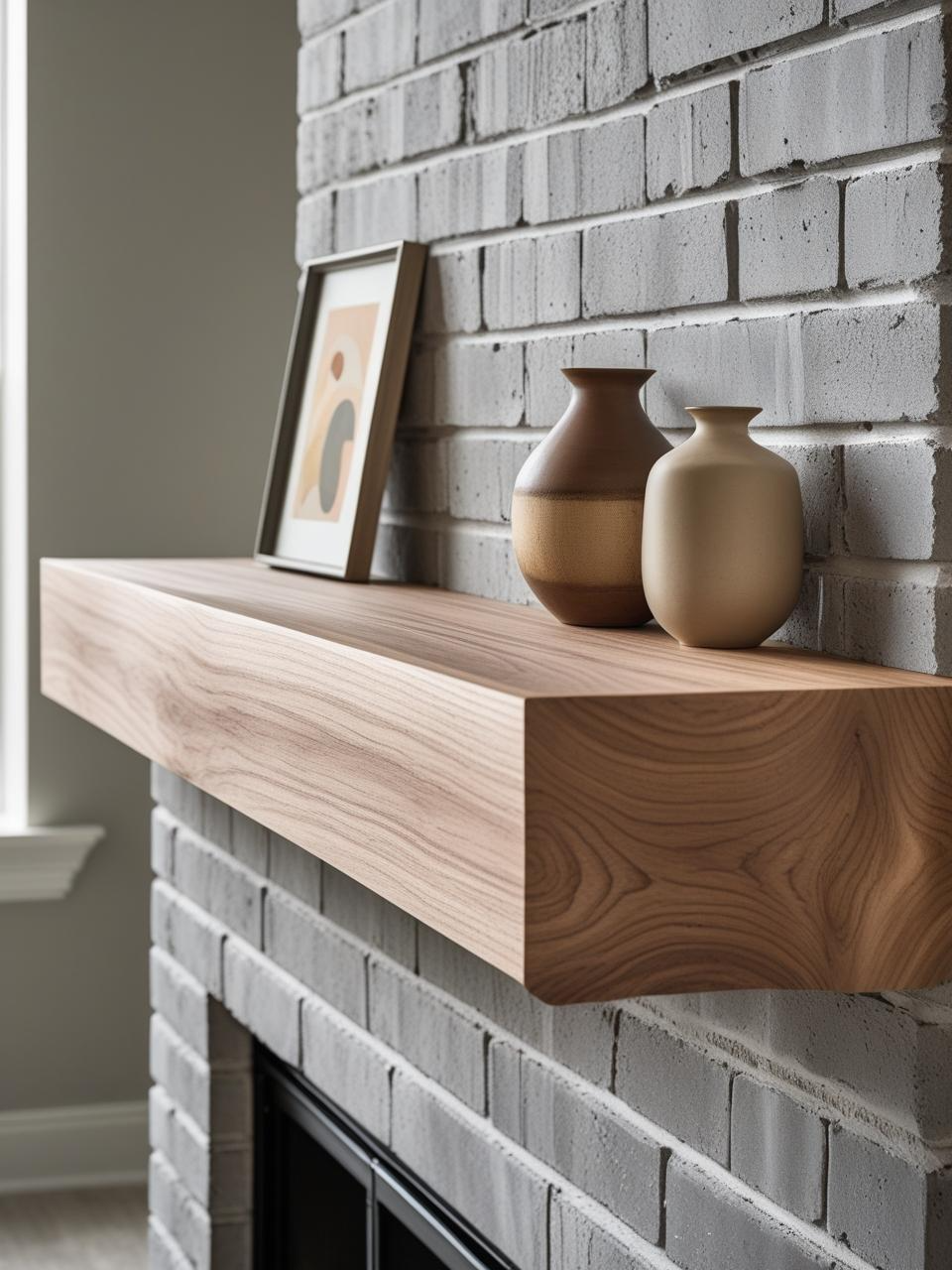
A mantel is the hearth’s crown. After twenty years of fitting mantels, I know that the wrong mantel can feel heavy or awkward. Your gray brick needs a mantel that feels grounded but not heavy. Avoid large dark wood slabs that soak up light. Instead think of wood that carries tone—warm but not orange. A light walnut, soft oak, or warm reclaimed wood will hug the gray without stealing the show.
If your bricks have a cool gray tone, the wood should have a neutral warmth. Maybe a little amber in it. That little glow makes the gray feel friendly. Fit the mantel so it looks rooted in the brick plane. It should not jut out too far. Not too tall, not too low. When done right, the mantel looks like the brick built years ago. When done wrong, it floats or leaks light. Pick wood that feels steady, has grain you can feel in your fingers, and is long enough for a few simple objects—not crowded, but enough to show care.
Section 4: Styling the Hearth with Natural Finds and Life
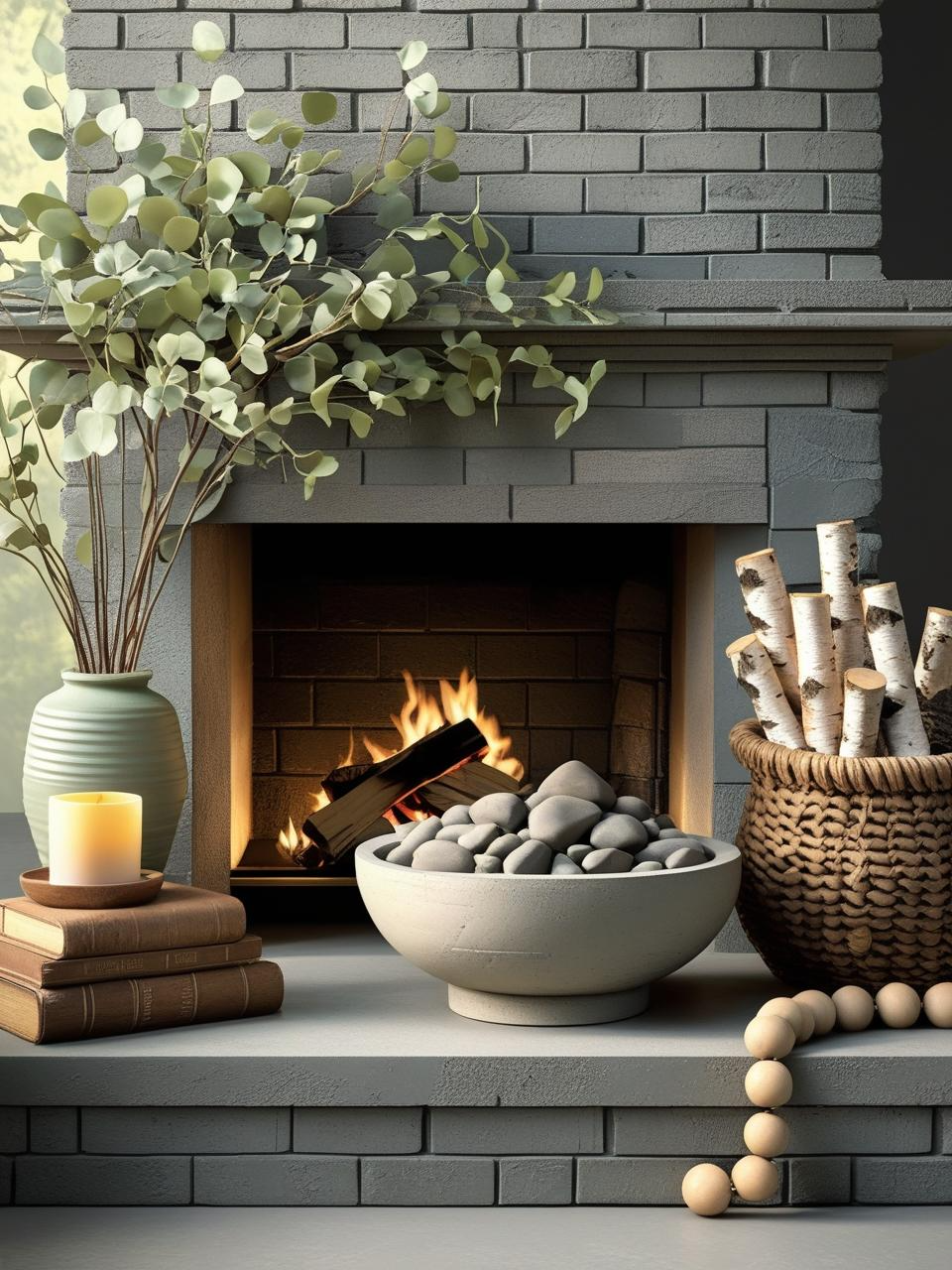
The hearth is more than just where the fire goes. It is where life can gather. I place earthy finds there. A simple vase with greenery, a soft stone bowl on the floor, a woven basket of birch logs, a mound of smooth river stones in a low dish. These things spread warmth from the bricks out into the room. The green of a slow‑growing plant wiggles against gray without shouting. Earthy finds ground in the room. They whisper that this is not just a fireplace. It is a place where calm happens.
Choose items that age with grace. A round wooden bead garland on the hearth, leather‑bound books stacked quietly, a handmade pottery cup or candle holder. These things don’t distract. They add story. Visitors sense attention. You sense peace.
Section 5: Lighting That Makes Gray Brick Glow
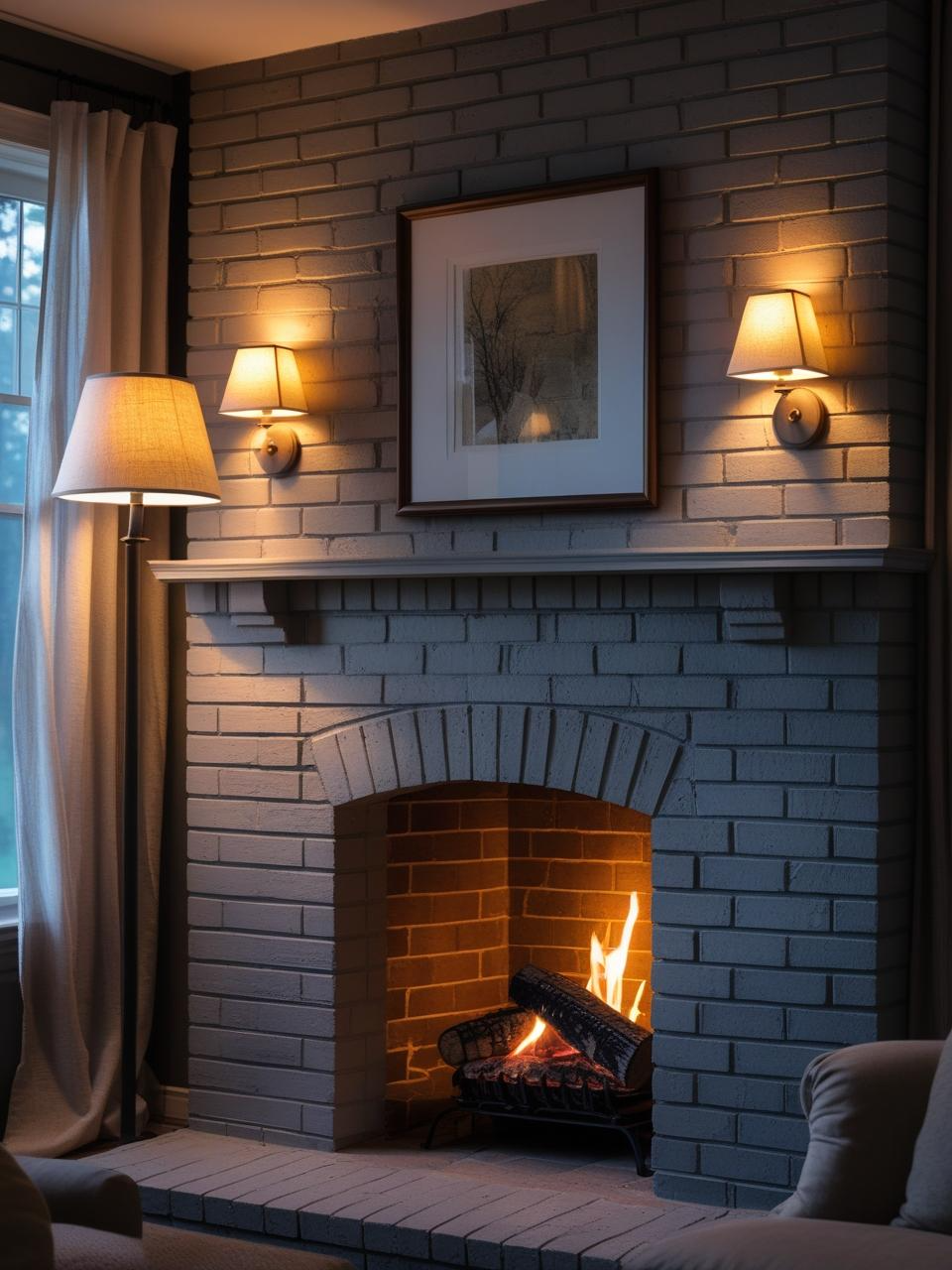
Lighting is how you tell your fireplace to shine. Harsh overhead lights map every ditch and crack in your bricks. That kind of light fights with the fireplace’s story. Instead, shine soft light from low angles. A table lamp with a linen shade on a side table nearby can glow onto the bricks. A small picture light above a framed art piece on the mantel can sway light gently downward across the bricks. A pair of slim wall sconces—warm metal or matte ceramic—with bulbs at eye level and softly frosted glass can cast a calm glow.
Think of light as a warm invitation toward the brick. It should not uncover flaws. It should show depth. Shadows should rest in the mortar lines and crown the bricks softly. At night, let the fireplace be the room’s warm hug. In the day, let sunlight rest on it. If sunlight lands on the bricks, diffuse it through linen curtains. You want soft, glowing textures—not glare.
Section 6: Adding Color and Contrast That Complements Gray
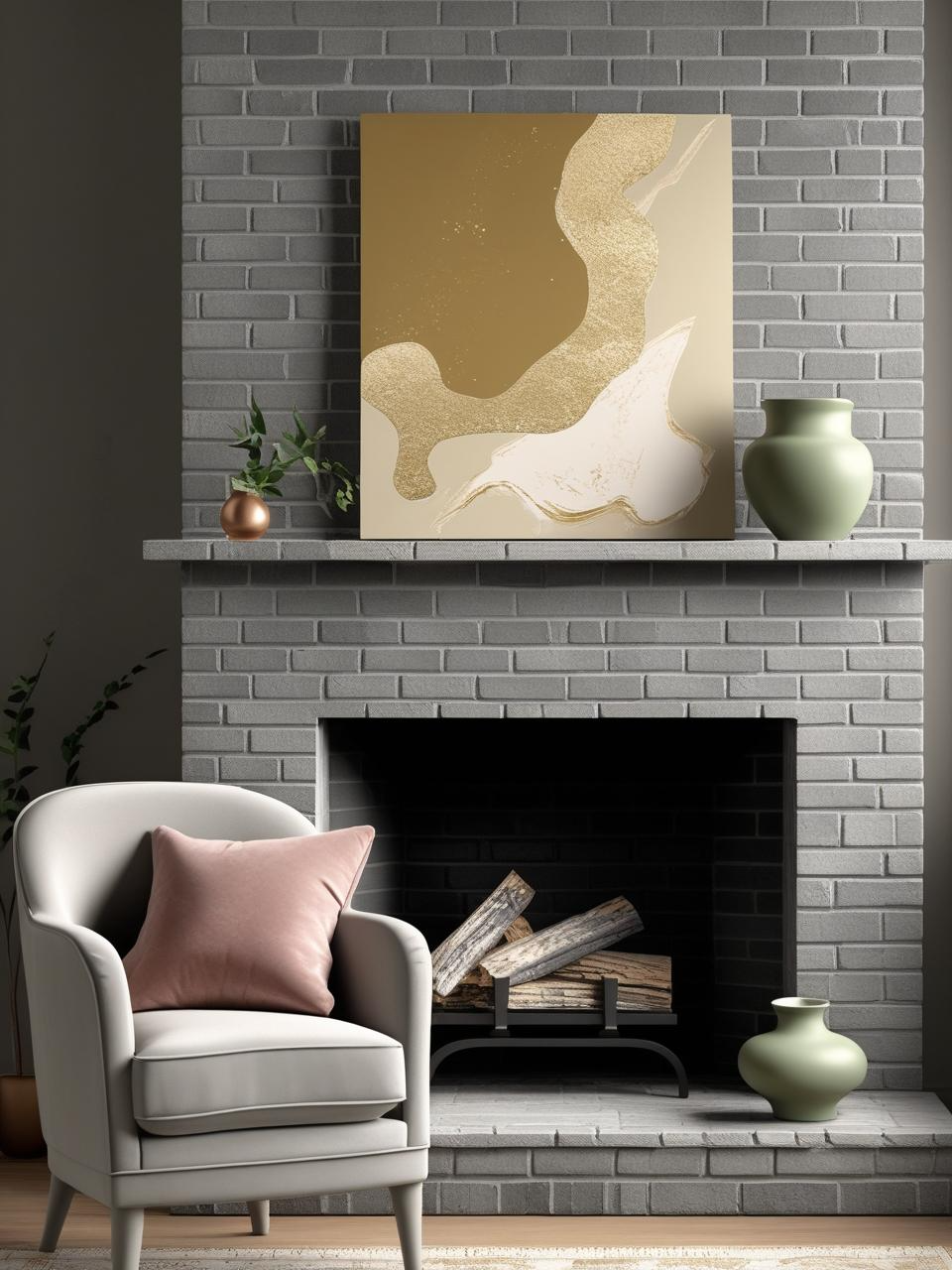
Gray is polite. It listens. You don’t need loud colors to make it beautiful. A few quiet accent colors add life. One desaturated dusty rose, a soft moss green, or a warm mustard tone. Maybe one small pillow or vase or art print in these colors placed near the fireplace. Their purpose is not to dominate. They speak kindness to the gray and let it speak back. They remind the room that life lives here.
If you choose art above the mantel, pick a piece with cream, soft gold, and one of your accent colors. Then the bricks become part of the art—soft, layered context. The eye moves from art to brick to hearth as one warm sentence. You don’t need big, bold paintings. A gentle sketch, a subtle landscape, or a handwritten phrase in soft ink can do the trick.
Section 7: How to Refresh the Brick Over Time
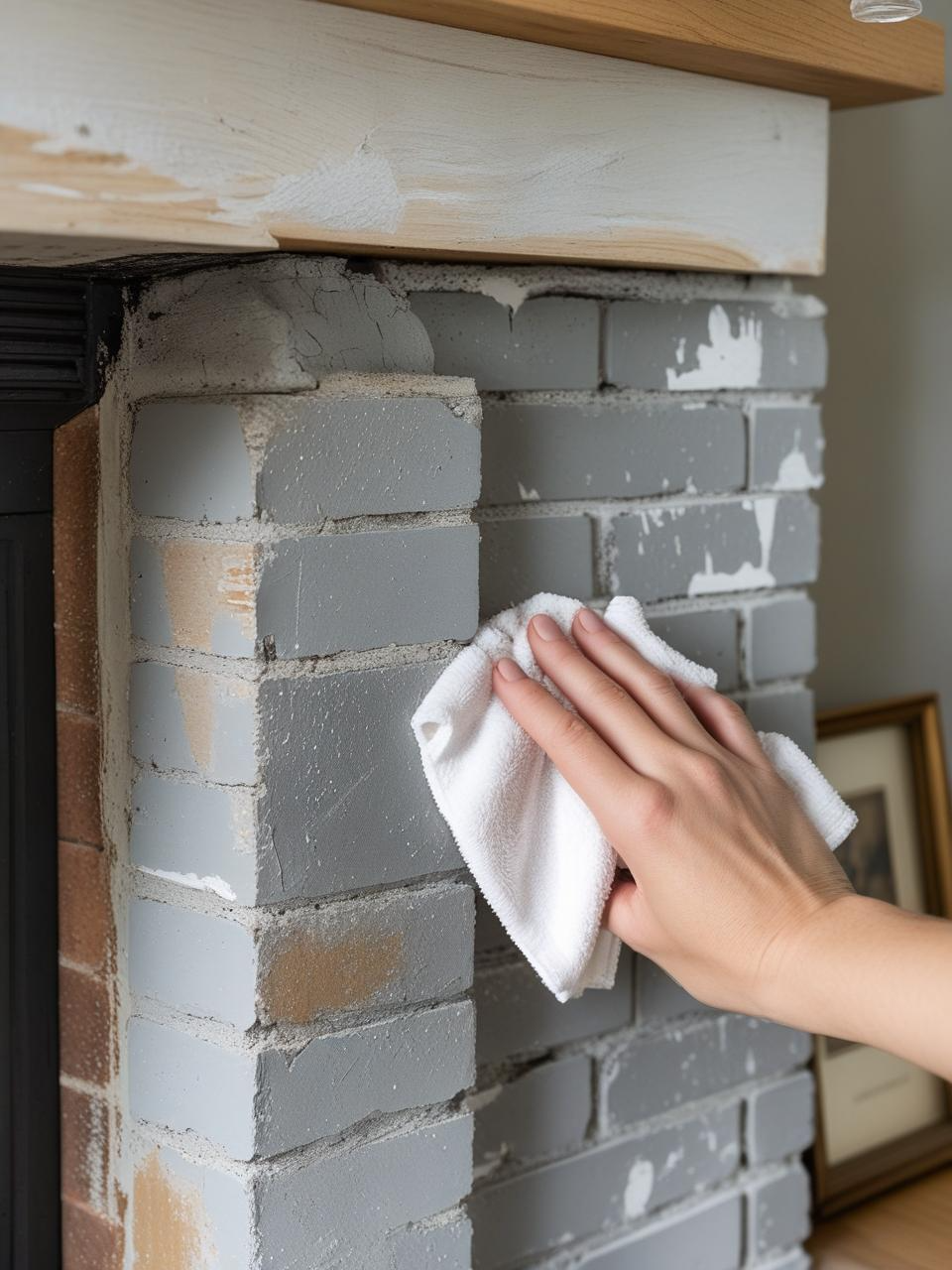
Gray bricks change. Dust settles. Paint peels. Mortar looks dull. After twenty years of caring for these fireplaces, I’ve learned simple habits to keep them warm and fresh. Once every few months, run your hand over the bricks. If they feel dusty or chalky, gently wipe with a soft cloth dampened with mild soap and water. Let dry. Do not scrub. The surface bonds quietly with the cloth.
If the gray is paint that’s chipping, try gentle sanding—light strokes—to blend edges. Then touch up with a matching tone. Avoid thick new paint. Let the old show. You want the fireplace to tell its years—not hide them. For whitewashed gray, refreshing the wash with watered‑down gray paint keeps it soft. It’s like giving it a gentle memory boost. Keep repair minimal.
Each season, dust off your mantel and hearth objects. Rotate small items if needed. Make the place feel alive, not stale. This shows care—not that you’re posting for a magazine—just that this hearth is home.
Section 8: The Feel of a Styled Fireplace That Lasts
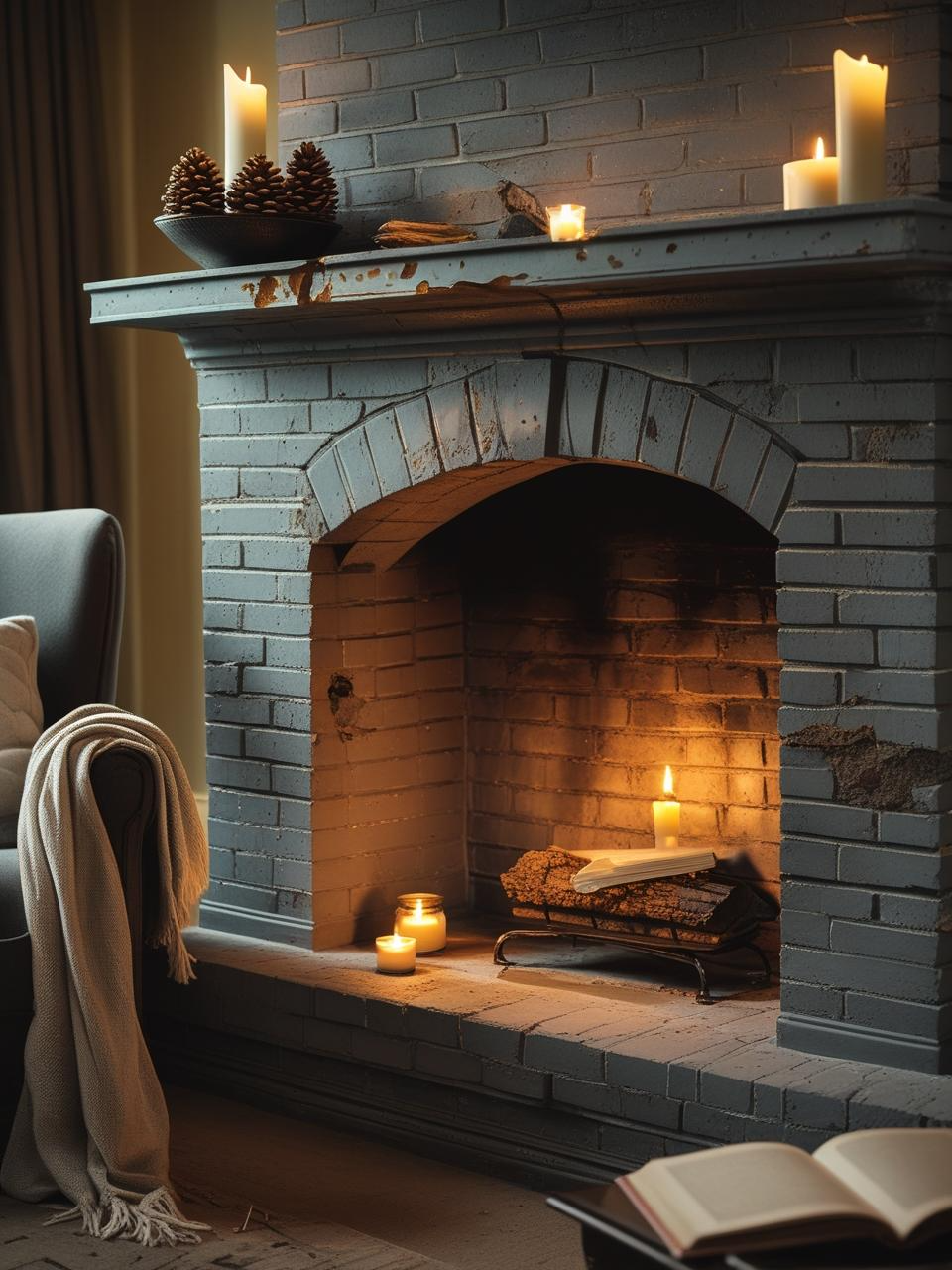
I have seen homes where the fireplace looked staged. It felt frozen. My goal is warmth that lasts. You want a fireplace that looks styled but also lived-in. Let a trail of pinecones rest in a bowl nearby. That small imperfection makes it real. Leave a candle half-burned. The soft edge of nightly life meets the bricks. Over time, your gray brick fireplace becomes part of your life’s story. It wears your calm breath. It wakes up your memories.
Section 10: Bringing It All Together—Your Story, Your Hearth
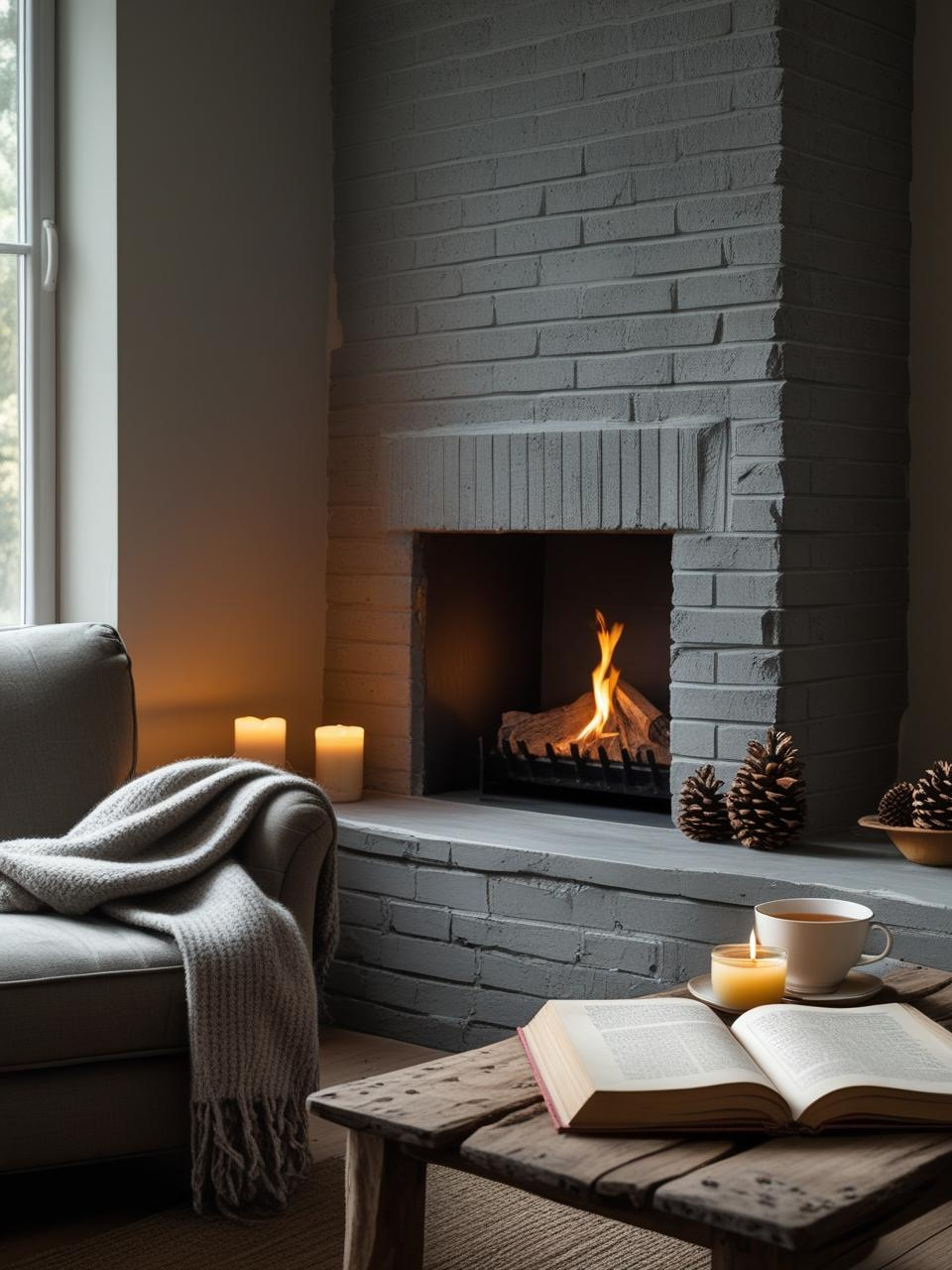
You’ve read these words. Maybe you kept a simple crack in your fireplace from day one. Maybe you already love your gray bricks. Then these ideas are gentle nudges. Maybe you’re just starting. Then these ideas are guiding steps. Let your fireplace be the quiet stage where your home performs its most peaceful acts: reading, thinking, sharing warmth.
Think of your gray brick fireplace as your companion. It has texture, tone, and just enough coolness to rest. When you bring softness, warmth, life, and light, you help it smile. When it smiles back, the whole room glows. And over time, every careful touch becomes your fingerprint.


